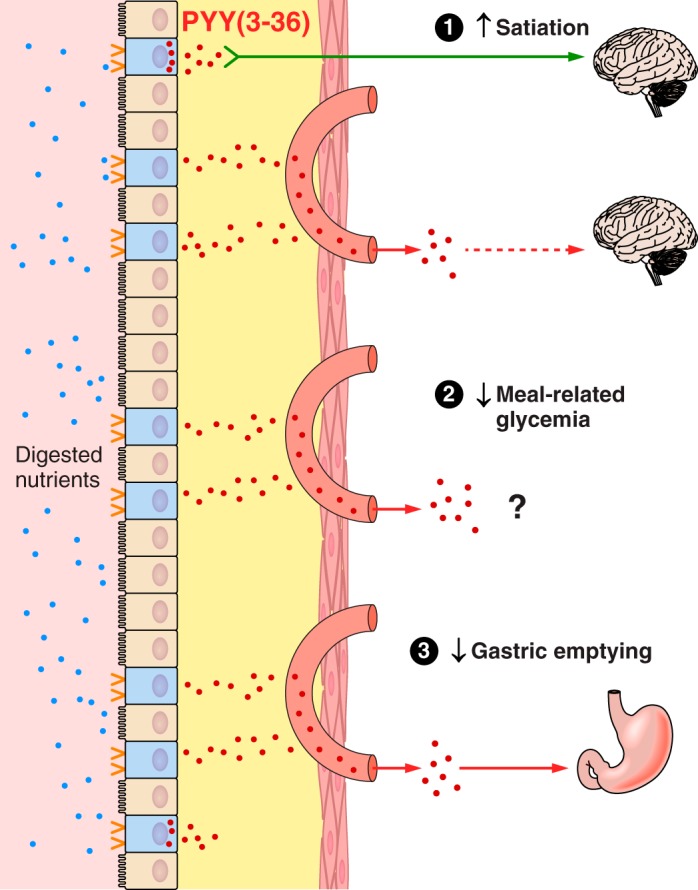FIGURE 11.

Some features of PYY(3–36) physiology. PYY secretion is stimulated by the digestive products of all three macronutrients acting on nutrient receptors on the apical aspects of enteroendocrine PYY cells (blue) dispersed in the epithelial layer (tan) of the small-intestinal mucosa. PYY is transformed into PYY(3–36) beginning in the lamina propria. PYY(3–36) acts in an endocrine mode by diffusing through the lamina propria (yellow) and into intestinal capillaries (salmon) to reach distant target organs (red arrows), or acts locally. 1) The role of PYY(3–36) in eating is uncertain. It may inhibit eating via a local action on vagal afferents (green arrow) in the lamina propria or by acting directly in the brain. 2) Whether PYY(3–36) improves meal-related glycemic control is uncertain. 3) PYY(3–36) appears to slow gastric emptying via a direct endocrine effect on the stomach; whether vagal-vagal reflexes contribute is unknown. Solid lines indicate well established effects, and dashed lines indicate less well established effects.
